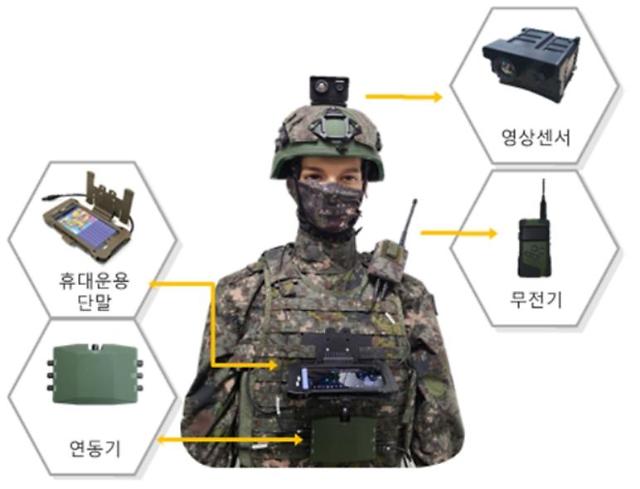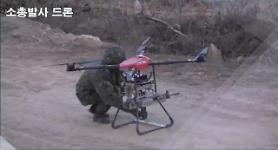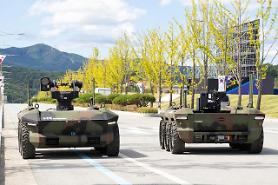
[Courtesy of DAPA]
SEOUL -- Hanwha Systems, a major defense contractor in South Korea, was selected for a military pilot project to test a smart personal surveillance system that allows users to share battlefield situations in real-time through video by using smartphones instead of radio communication. It maximizes portability and convenience as video information can be exchanged anytime, anywhere.
Hanwha Systems said that a personal helmet is equipped with an intelligent image sensor for day and night operations that consist of a high-resolution camera and an infrared thermal imaging camera. An ultra-small intelligent thermal engine module accurately recognizes objects about one kilometer away.
The system will apply security modules to communicate encrypted voice or data, the Defense Acquisition Program Administration (DAPA) said, adding that surveillance images through image sensors would significantly increase combatants' ability to enable the automatic detection of targets based on deep learning.
Hanwha Systems was among a number of defense contractors that would supply equipment through a rapid pilot purchase program aimed at applying advanced civilian technologies to the military quickly through simplified procedures. DAPA head Wang Jung-hong said in a statement on December 4 that the program would help South Korean troops prepare for the rapidly changing future battlefield.
Hanwha Corporation will supply an intelligent anti-jamming sensor that protects satellite navigation signals from jamming attacks and can be mounted on armored vehicles and tanks without mechanical or electrical modification. It will be applied first to K21 infantry fighting vehicle in service.
LIG Nex1 will provide a smartphone-based command system that integrates the military version of Samsung Electronics' Galaxy S20 smartphone and radios to communicate battlefield situations with real-time encrypted data and voice safely without a communication repeater. The system is equipped with a night vision mode, a communication cut-off mode and a night video shooting and sharing mode to ensure operational security and combatant viability.
Copyright ⓒ Aju Press All rights reserved.



